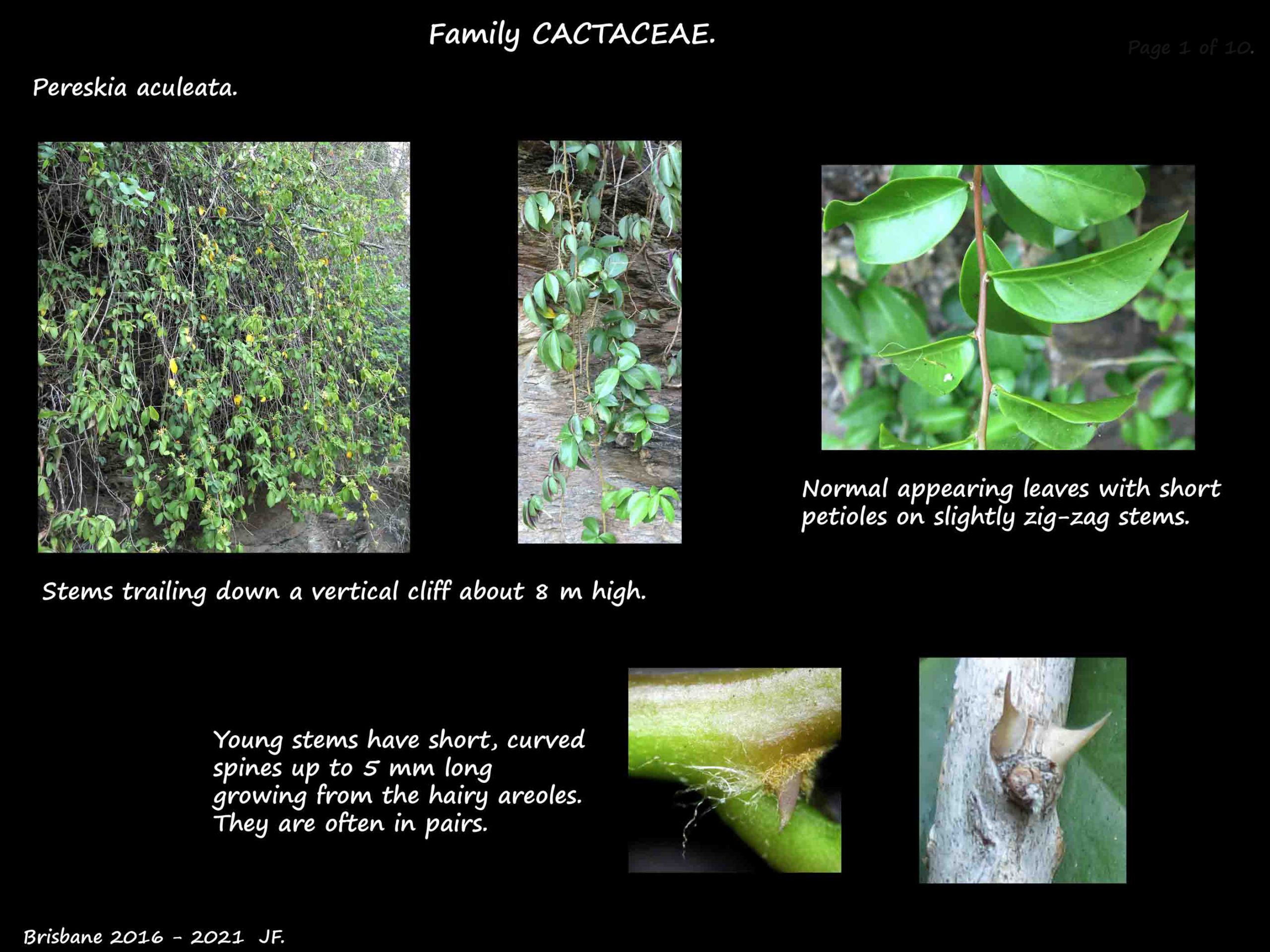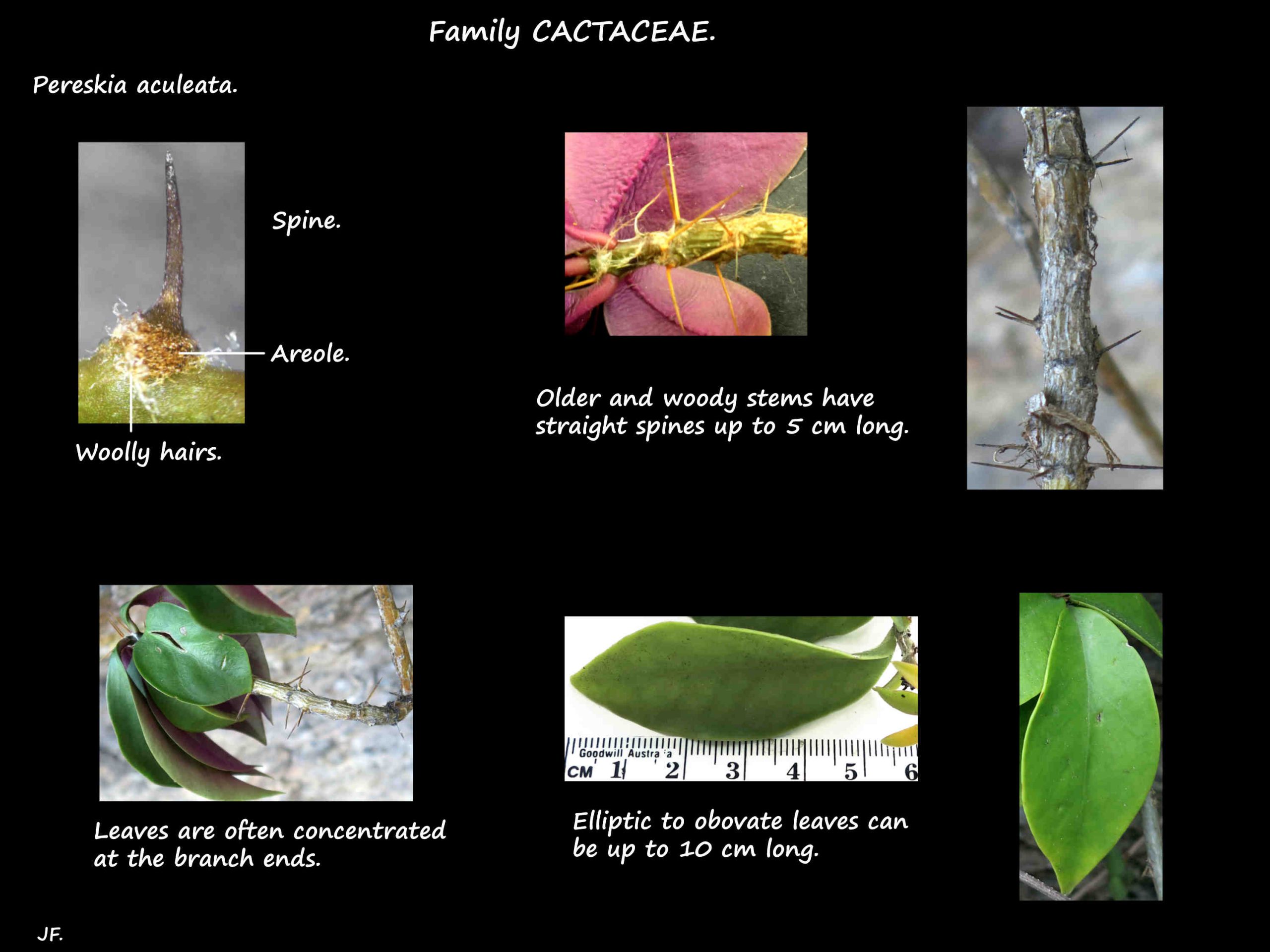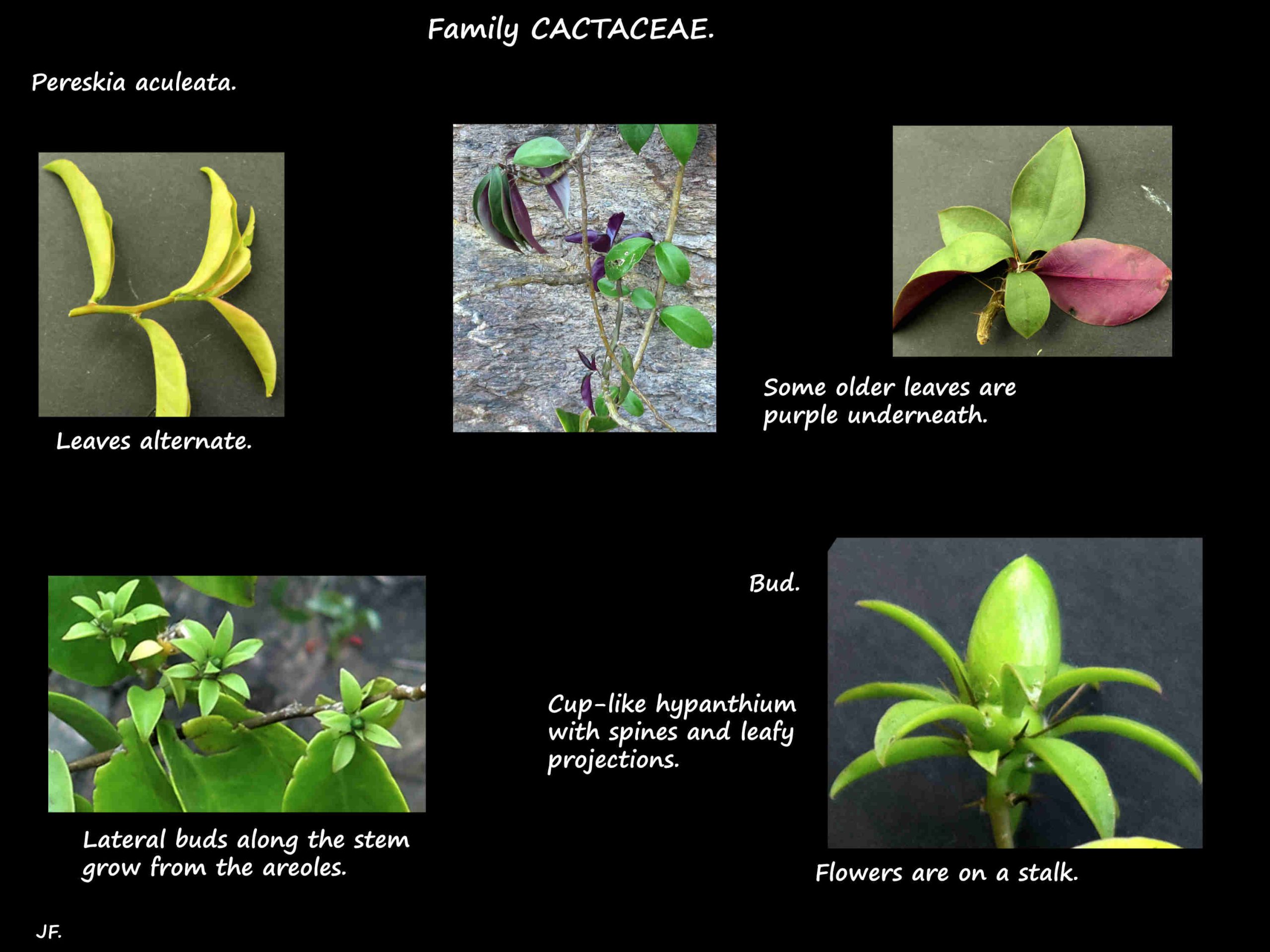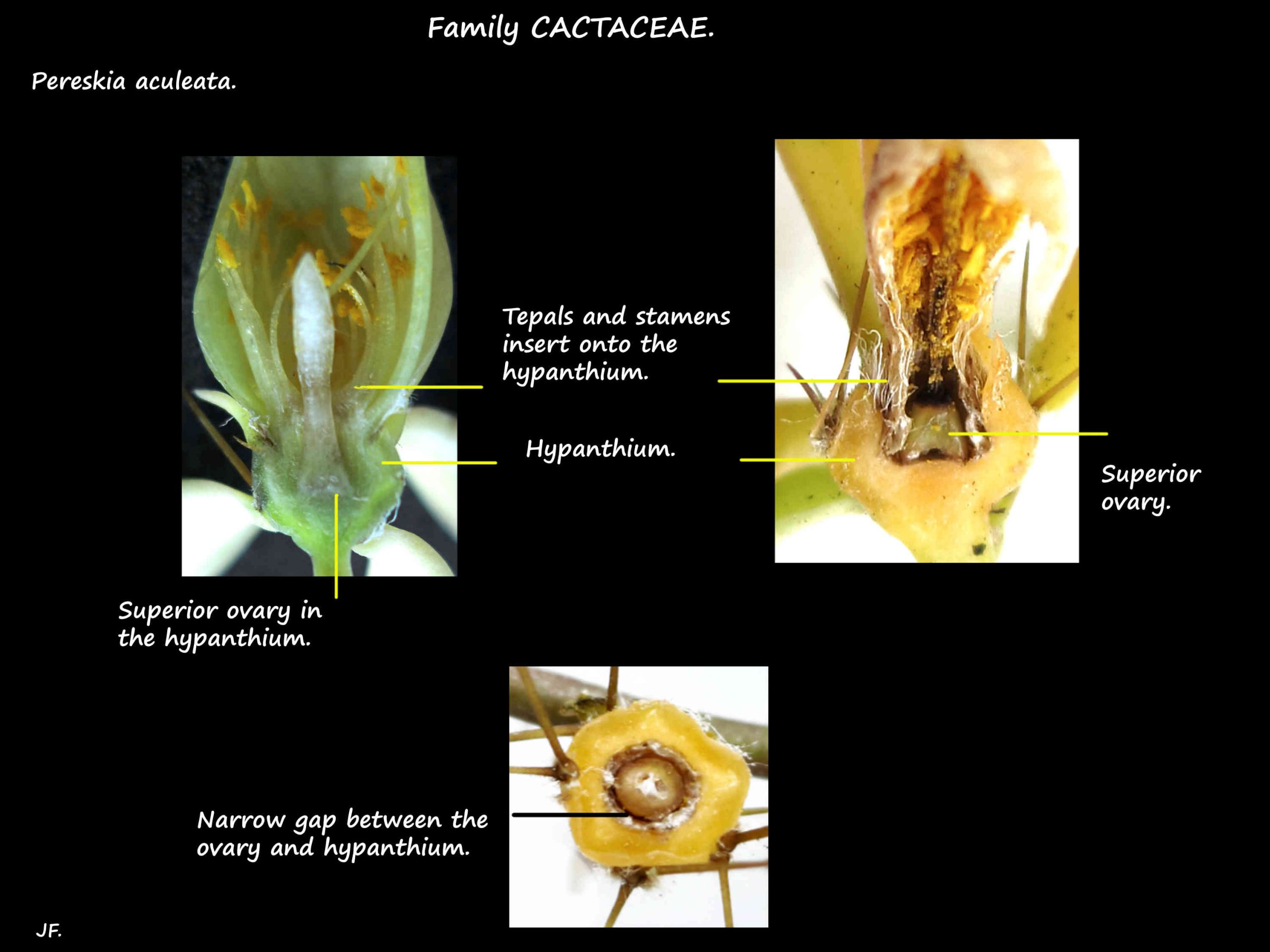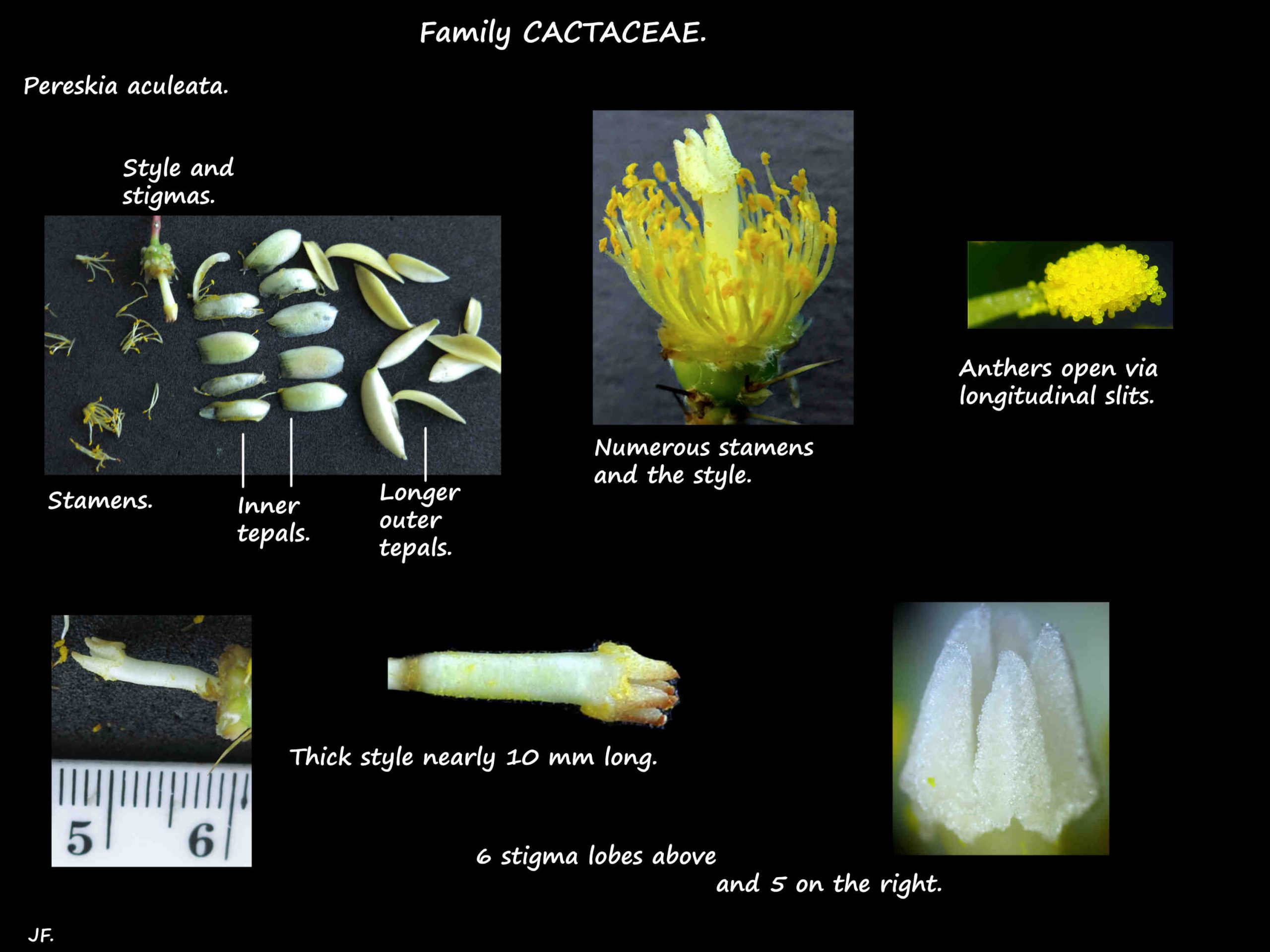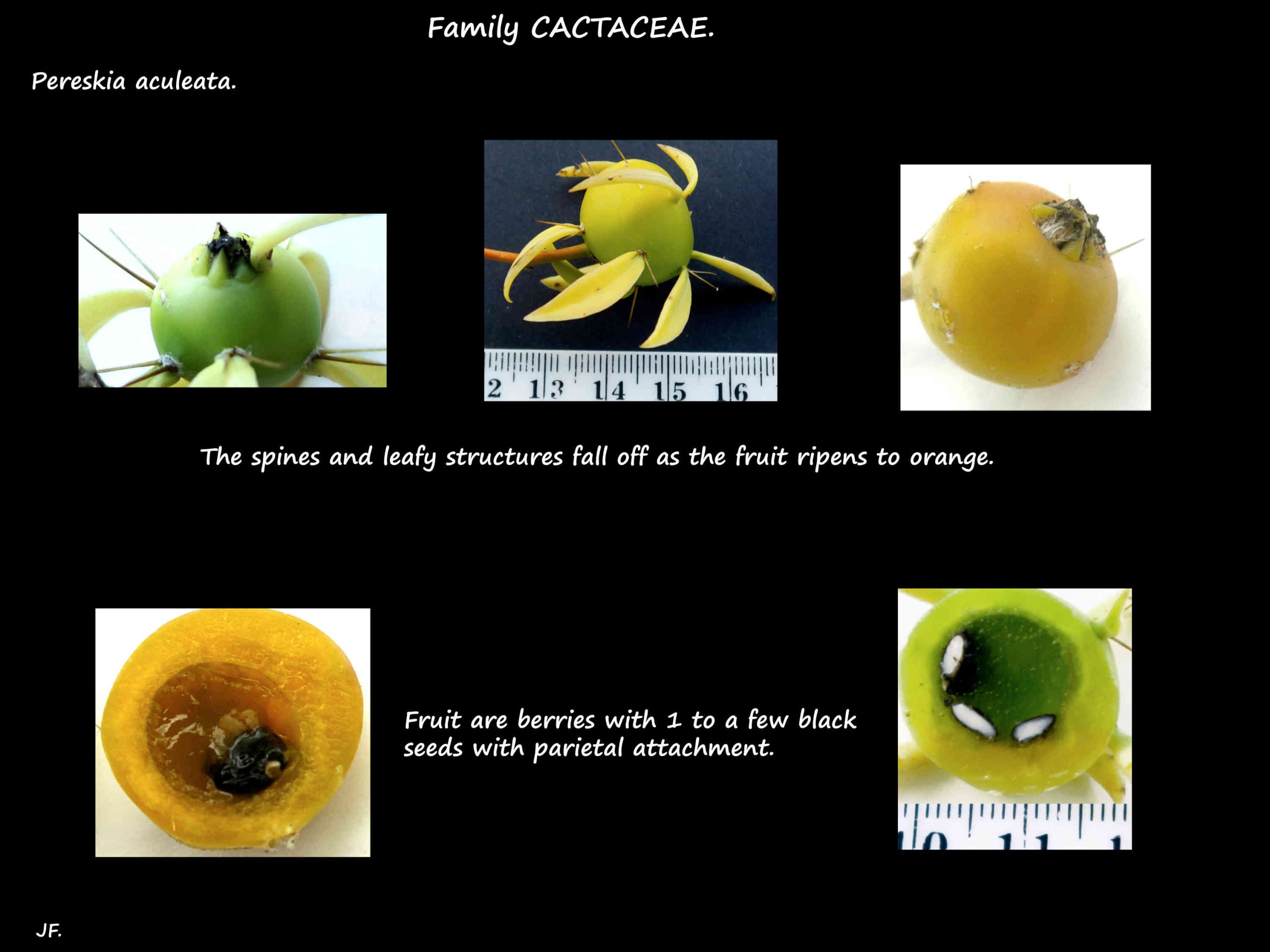Pereskia aculeata.
Family Cactaceae > Subfamily Pereskioideae.
The Leaf cactus or Barbados Gooseberry is naturalised in small areas of Brisbane.
Of the around 20 species it is the only one found in Queensland.
They are occasionally seen in gardens.
Pereskia are the most primitive of the Cactaceae and morphologically very different from the rest.
Young plants are erect shrubs with fleshy stems that have spines but no hairs.
The younger stems are zig-zagged.
Older plants are scramblers or climbers with stems up to 10 or 12 m long.
They can form dense thickets or suffocate other vegetation.
There are areoles alternately arranged along the branches.
The leaves, spines and flowers grow from them.
Areoles on young stems have 2 (1, 3 or more) curved spines around 4 mm long.
Older, woody branches have multiple, dark, straight spines from each areole.
Of different lengths they are up to 5 cm long.
The leaves, on short petioles, tend to be clustered at the branch ends.
They are obovate or elliptic and up to 10 cm long by 5 cm wide.
They have a flat, fleshy blade with pinnate veins and a pointed tip.
Leaves are yellow to dark green depending on their age and exposure to the sun.
Some leaves are purple underneath.
The lateral inflorescences grow from the areoles.
They can be a solitary flower or a branched cluster of up to a dozen or more.
On stalks they are around 2 to 6 cm in diameter.
The sepals and petals merge into each other and are sometimes referred to as tepals.
Their bases are fused to form a greenish hypanthium.
The fleshy green sepal lobes and the petal lobes attach to the rim.
The outer surface of the hypanthium has areoles with spines, hairs and leaf-like structures.
The almost translucent petal lobes are white or cream.
The many stamens, shorter than the petal lobes, insert low down inside the hypanthium.
The ovary is superior and has a single thick, white style with a number of stigmas.
One to a few flattish, black seeds, about 4 – 6 mm across, develop in the ovary.
The fruit are round to pear-shaped berries up to 2 cm across.
Initially green the succulent hypanthium ripens to yellow then orange.
The spines and the leafy structures usually fall off.
J.F.

